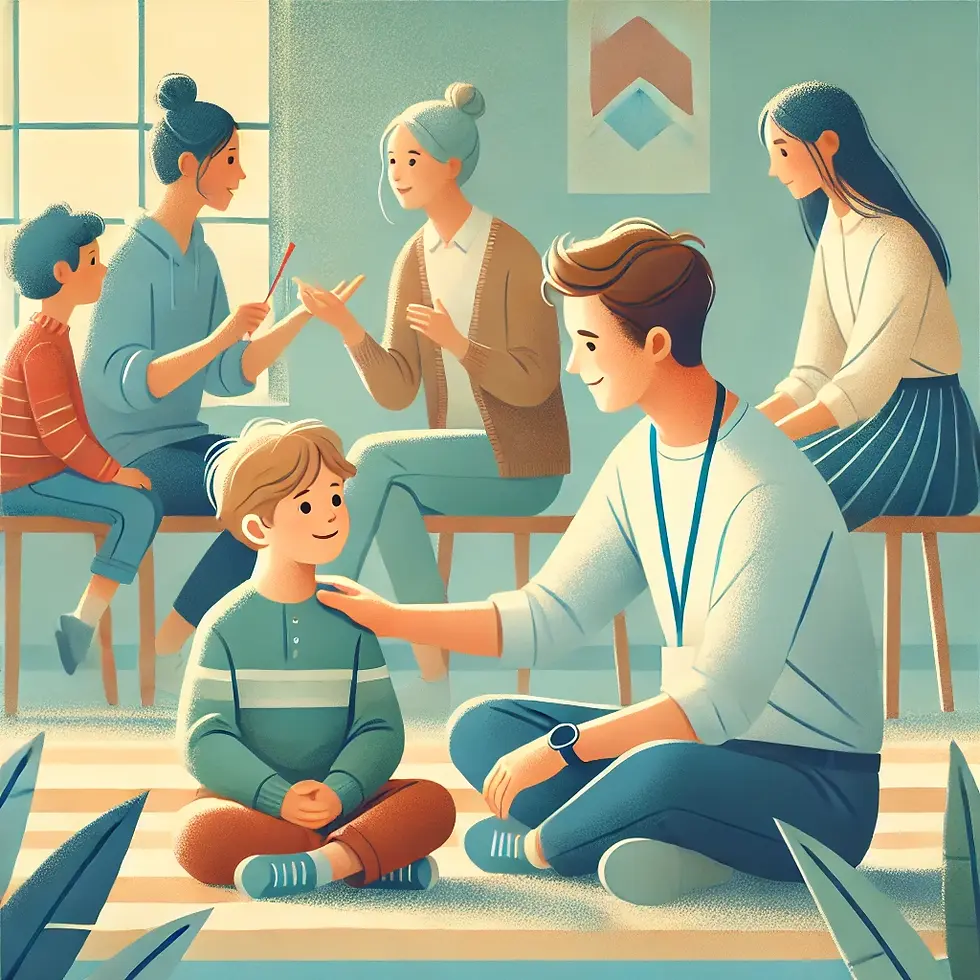Helping High-Functioning Autistic Children Improve Social Skills
- Ryan Carvalho
- Feb 1
- 3 min read

Let’s Talk Social Skills & High-Functioning Autism
Ever met a child who can recite every historical fact about Ancient Rome but struggles to say “hi” to a classmate? That’s the paradox of high-functioning autism—brilliance in some areas, yet real challenges in everyday social interactions.
For over 11 years, I’ve worked with kids and young adults on the spectrum, helping them bridge the gap between their strengths and social struggles. I’ve seen firsthand how structured, practical interventions can transform a child’s ability to connect with others.
Breaking Down the Core Challenges
High-functioning autistic individuals face hurdles in four key areas:
🚀 Social Challenges
Eye contact? Awkward.
Small talk? Confusing.
Friendships? Tricky.
Understanding jokes and sarcasm? Nearly impossible.
🧠 Cognitive Challenges
Executive function skills (planning, organizing, time management) can feel overwhelming.
Change? Not a fan.
Special interests? All-consuming.
🎧 Sensory Challenges
Loud environments = sensory overload.
Bright lights, scratchy clothing, background noise? All potential triggers.
The need for personal space and sensory accommodations is real.
🏃 Motor Challenges
Difficulty with fine motor skills (e.g., handwriting, tying shoes, using utensils).
Gross motor delays affecting balance, coordination, and participation in sports.
Struggles with gestures and nonverbal communication (e.g., waving, giving a high-five).
Can impact confidence and lead to avoiding social or physical group activities.
Recognizing these challenges helps us create targeted strategies to support social success.

Building Social Superpowers
So, how do we help? Here’s what actually works:
1️⃣ Understanding Nonverbal Cues
🟢 Tip: Teach eye contact in a way that’s comfortable (e.g., looking at someone’s forehead instead). 🟢 Tip: Use facial expression flashcards or YouTube videos to practice emotions.
2️⃣ Conversation Flow & Small Talk
🟢 Tip: Play social games to practice turn-taking and topic maintenance. 🟢 Tip: Use conversation scripts to help guide interactions.
3️⃣ Making Friends & Keeping Them
🟢 Tip: Identify shared interests as a foundation for connection. 🟢 Tip: Role-play common scenarios like joining a group activity or handling rejection.
4️⃣ Social Rules & Hidden Expectations
🟢 Tip: Explicitly teach unwritten social rules (e.g., personal space, how to end a conversation). 🟢 Tip: Use social stories to break down tricky social situations step-by-step.
5️⃣ Managing Social Anxiety
🟢 Tip: Practice deep breathing techniques for stress relief. 🟢 Tip: Start with low-stakes social interactions and gradually build up to more complex ones.
Real Success Story: The History Buff Turned Social Butterfly
One of my favorite transformations? A brilliant fourth grader who could lecture on medieval warfare for hours but couldn’t initiate a simple conversation. We worked on structured role-play, social coaching, and peer interactions—and within months, he went from sitting alone at recess to having real friendships and engaging in group activities. His parents were floored.

Final Thoughts: Social Growth is Possible
High-functioning autistic children have huge potential—they just need the right tools. Social skills can be learned like any other subject, through structured practice, patience, and the right support.
While my primary focus is social and behavioral coaching, it's important to recognize that motor challenges and speech delays can also play a role in social struggles. In many cases, a multidisciplinary approach—including ABA, occupational therapy (OT), and speech therapy—can provide the best results.
Need help getting started? I’m here. Let’s build a plan tailored to your child’s unique strengths and challenges. Social success starts today! 🚀




Comments